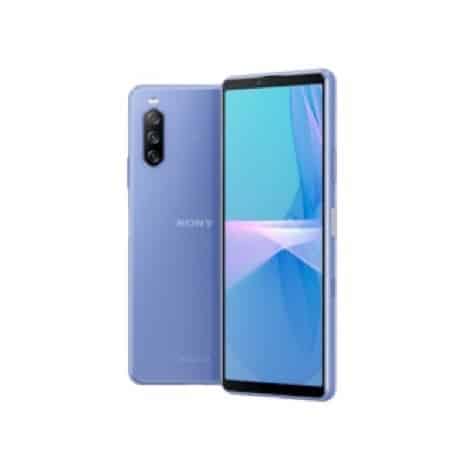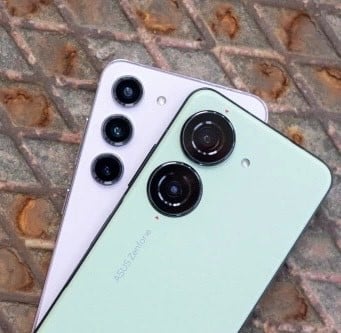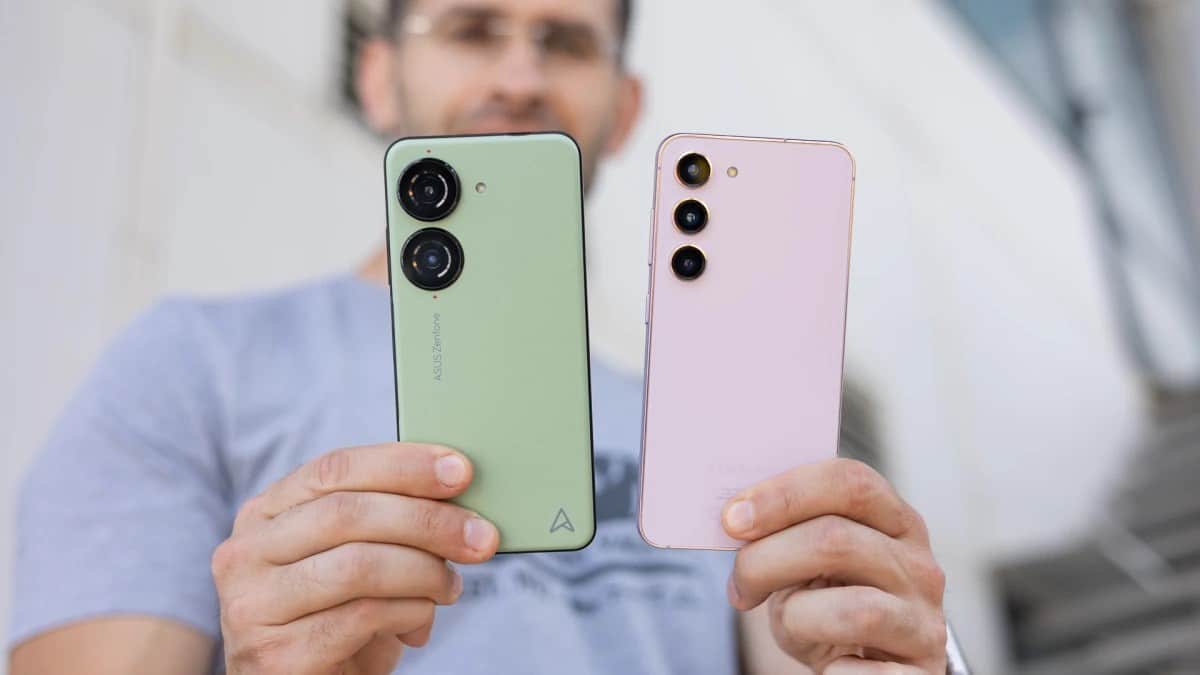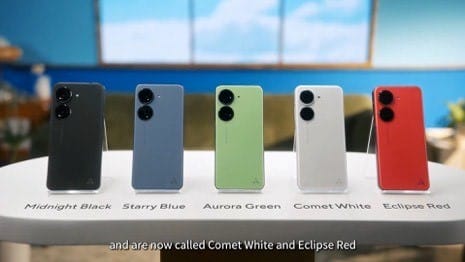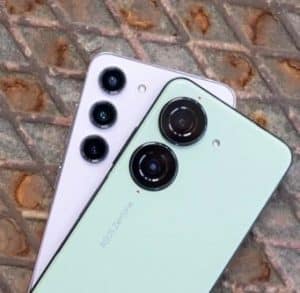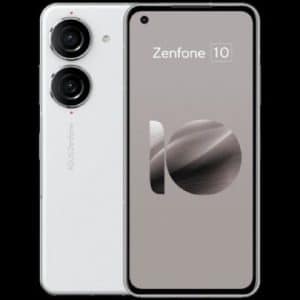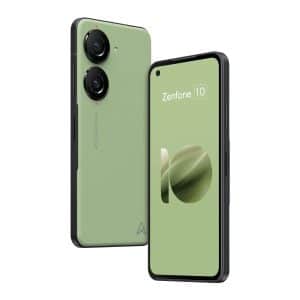HIGHLIGHTS
* The ASUS Zenfone 10 is powered by Snapdragon 8 Gen 2 SoC.
* The device packs up to 16GB of RAM and 512GB of internal storage.
* The smartphone features a 50MP dual-camera setup and a side-mounted fingerprint sensor.
ASUS just announced the Zenfone 10, the company’s latest flagship smartphone, as it had promised. It has a 5.9-inch Full HD+ OLED screen, same as the predecessor, but the refresh rate has been bumped to 144Hz, but it works only in games. It also gets up to 1100 nits peak brightness.
This is powered by Snapdragon 8 Gen 2 SoC with up to 16GB of RAM and has vapour chamber cooling. It runs Android 12 with ZenUI, and the company only promises 2 years of OS updates and 4 years of security patches.
This retains a 50MP camera with Sony IMX766 sensor, but gets improved six-axis gimbal stabilization 2.0, adaptive EIS and a new 13MP ultra-wide camera and a 32MP front camera.
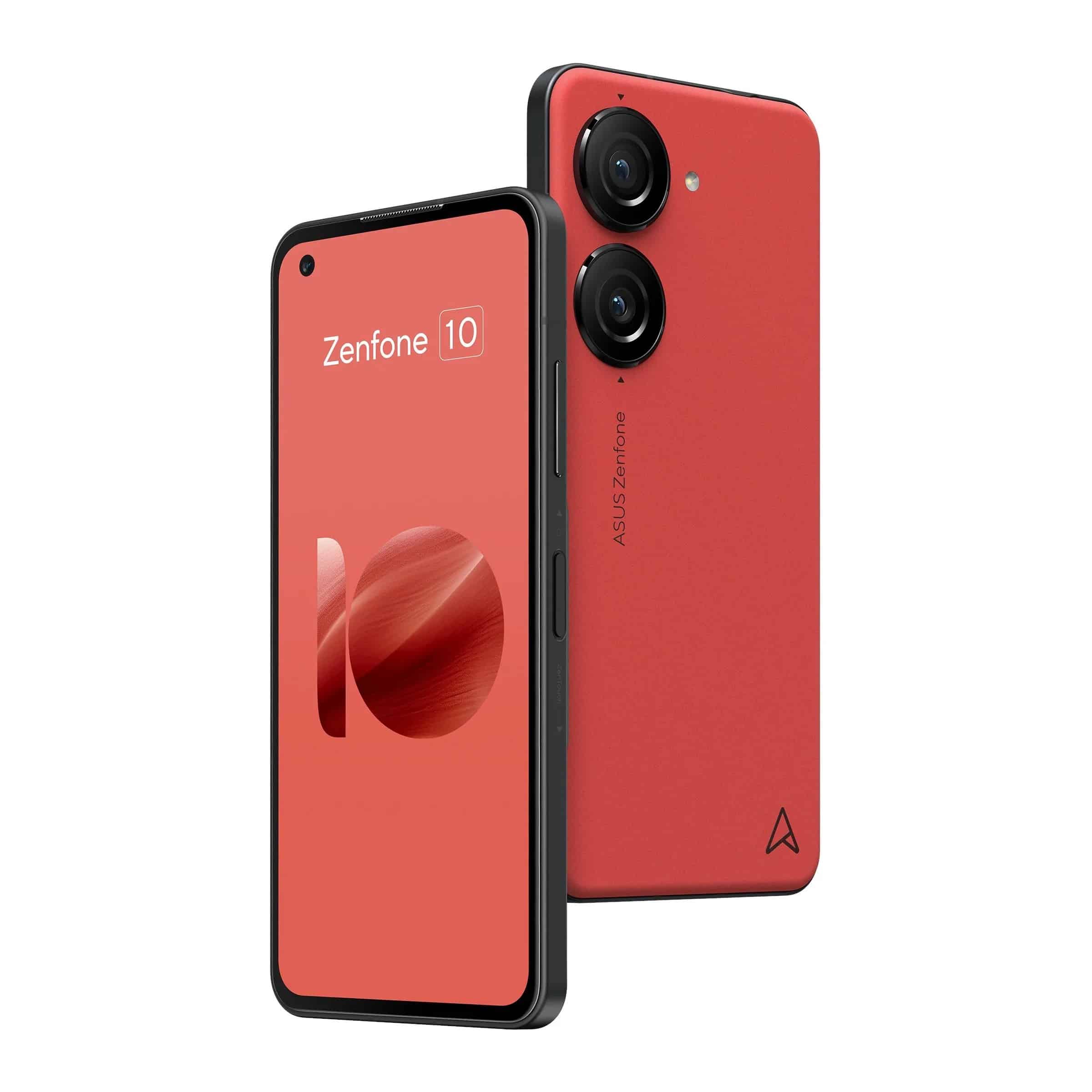
The phone retains the ASUS ZenTouch, a multifunction side-mounted power button incorporating a fingerprint sensor and support for convenient gesture controls.
The back of the phone is made of textured surface made of advanced material that is really tough and comfortable, yet grippy and also reduces the weight of the phone, says the company.
It retains IP68 water and dust resistant ratings and the same 4300mAh battery with support for 30W fast charging, but adds 15W wireless charging.
ASUS has launched the Zenfone 10 in global markets today. It arrives as the successor to the last year’s Zenfone 9. The latest offering packs significant upgrades over its predecessor while also retaining its design. Read on to know what the smartphone offers out of the box.
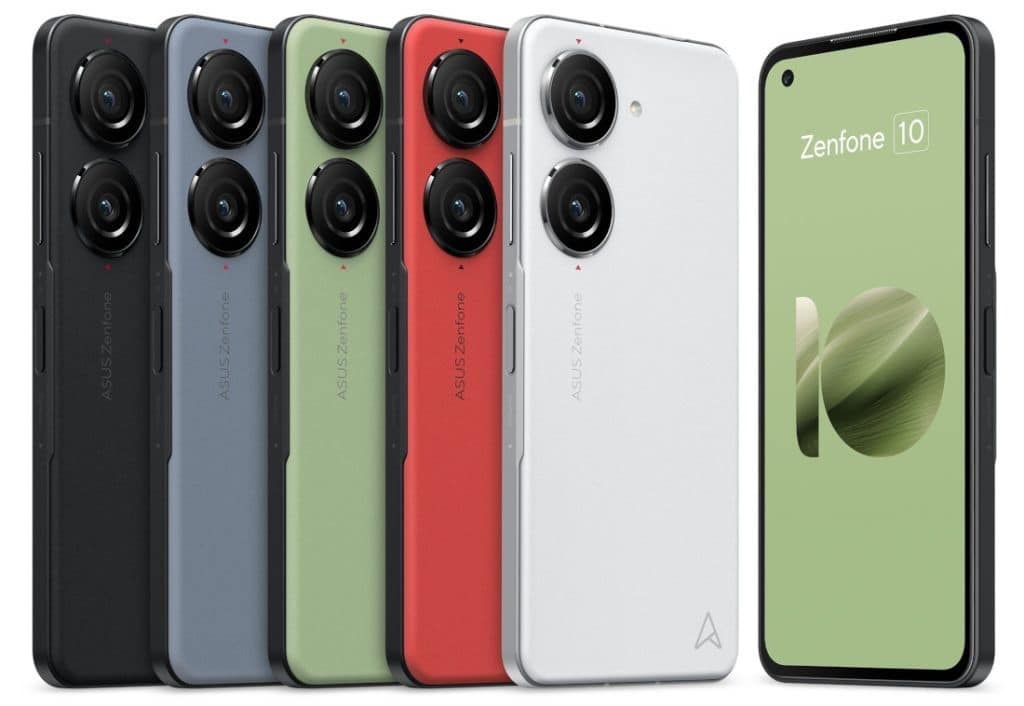 ASUS has finally launched the successor to the Zenfone 9, the ASUS Zenfone 10. Similar to its predecessor, the Zenfone 10 maintains a compact form factor with a smaller 5.9-inch display.
ASUS has finally launched the successor to the Zenfone 9, the ASUS Zenfone 10. Similar to its predecessor, the Zenfone 10 maintains a compact form factor with a smaller 5.9-inch display.
The device uses an AMOLED panel which offers a 144Hz refresh rate. Powering the smartphone under the hood there is a Snapdragon 8 Gen 2 SoC.
Furthermore, the handset features a dual-camera setup, a side-mounted fingerprint sensor, and a 32MP selfie camera.
Let us take a look at the pricing and detailed specifications of the ASUS Zenfone 10 ahead:
ASUS Zenfone 10 Pricing, Availability
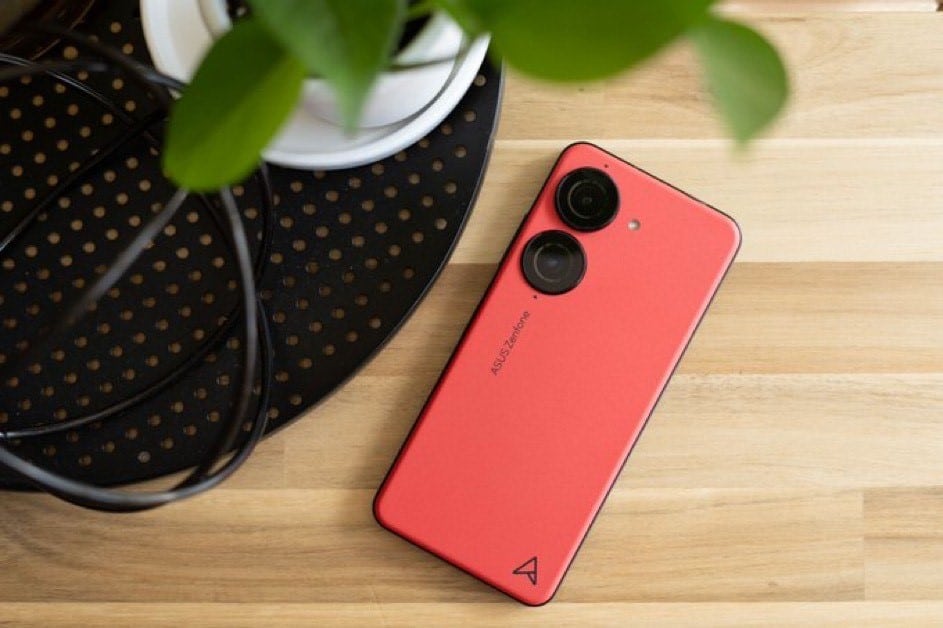
The ASUS Zenfone 10 comes in five colours — Midnight Black, Comet White, Eclipse Red, Aurora Green and Starry Blue.
The Zenfone 10 base model which comes with 8GB of RAM and 128GB of internal storage is priced at EUR 799 (roughly Rs 71,305), while the variant with 8GB of RAM and 256GB of internal storage costs EUR 849 (roughly Rs 75,757).
The top-end model which comes with 16GB of RAM and 512GB of internal storage is priced at EUR 929 (roughly Rs 82,905).
The device will be available for purchase in the US, the UK, Canada, Taiwan, and Hong Kong in Q3 2023.
ASUS Zenfone 10 Specifications, Features
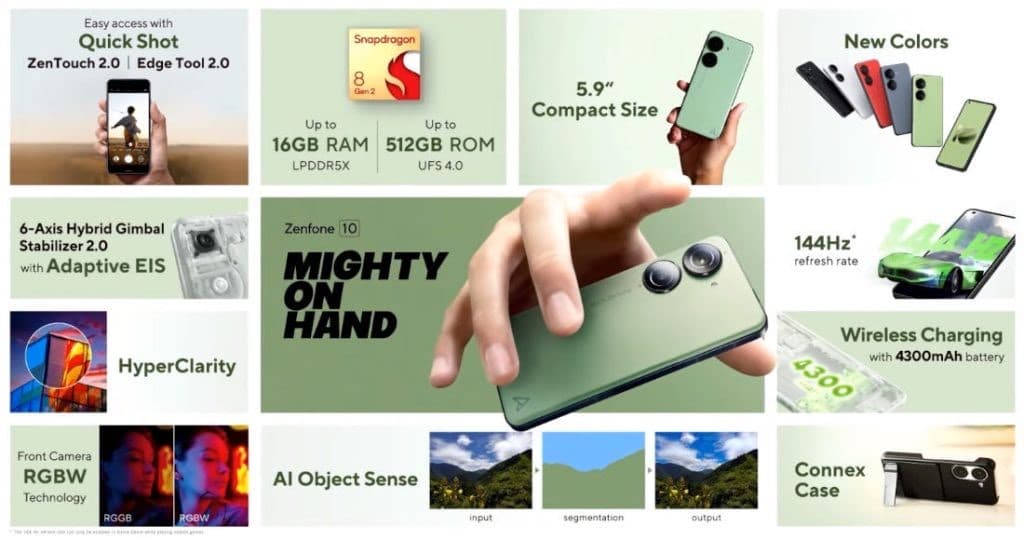
The ASUS Zenfone 10 runs Android 13 out of the box with ZenUI skin on top. ASUS claims that the handset will receive two Android OS updates and four years of security patches.
Under the hood, the Zenfone 10 is powered by Qualcomm’s flagship Snapdragon 8 Gen 2SoC which is coupled with Adreno 740 GPU. The device comes with 16GB of RAM and packs 256GB/512GB of internal storage.
The handset boasts a 5.9-inch AMOLED display that has a Full HD+ resolution and a 144Hz refresh rate. The display panel has a punch-hole cutout at the top left corner, a 20:9 aspect ratio, thin bezels on all sides, and a 1,100 nits maximum brightness.
 Moving onto the imaging department, the Zenfone 10 features a dual-camera setup. The camera module consists of a 50MP primary camera (Sony IMX766 sensor) and a 13MP ultra-wide camera.
Moving onto the imaging department, the Zenfone 10 features a dual-camera setup. The camera module consists of a 50MP primary camera (Sony IMX766 sensor) and a 13MP ultra-wide camera.
The 50MP sensor has a 6-axis 2.0 hybrid gimbal stabilizer with adaptive EIS support. For selfies and video-calling purposes, the Zenfone 10 relies on a 32MP camera.
The whole package draws power from a 4,300mAh battery which supports 30W fast charging.
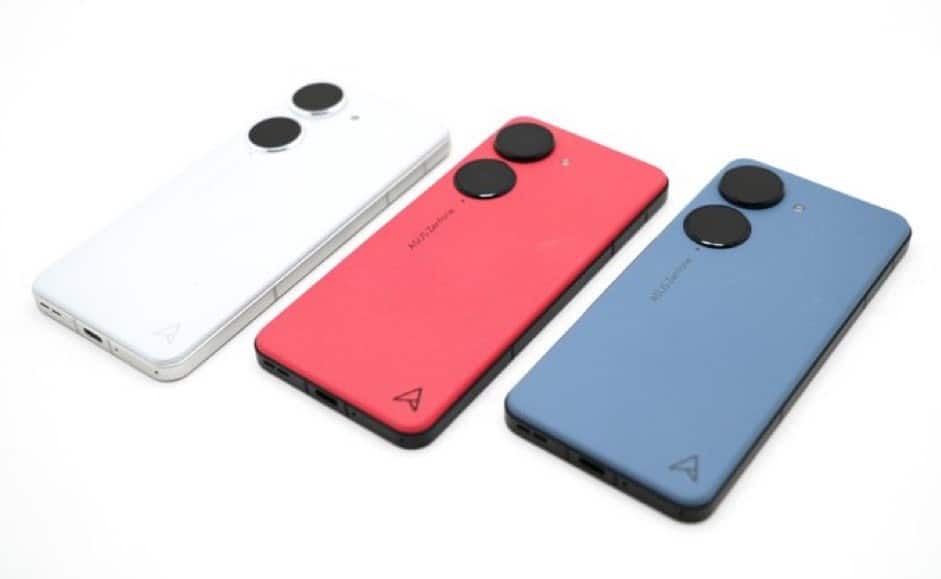 The device also has 15W wireless charging support. Connectivity-wise, the Zenfone 10 has a host of features such as a dual-SIM card slot, 5G, dual 4G VoLTE, Wi-Fi 7.0, Bluetooth, GPS, USB Type-C port, and a 3.5mm audio jack.
The device also has 15W wireless charging support. Connectivity-wise, the Zenfone 10 has a host of features such as a dual-SIM card slot, 5G, dual 4G VoLTE, Wi-Fi 7.0, Bluetooth, GPS, USB Type-C port, and a 3.5mm audio jack.
Last but not least, the device also has an IP68 rating for water and dust resistance, and a side-mounted fingerprint sensor.
ASUS Zenfone 10 Specifications
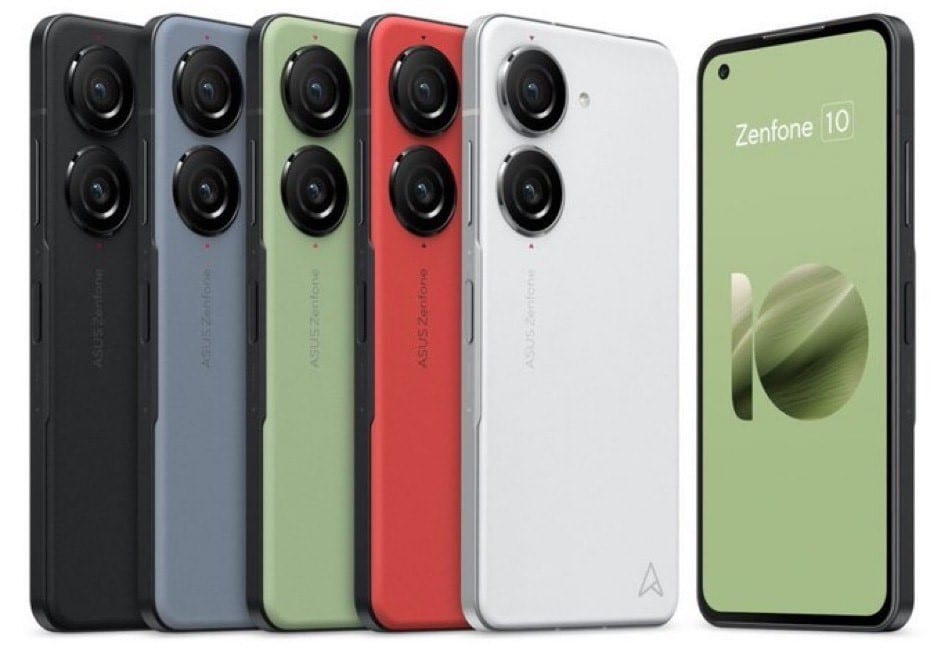
* Display: 5.9-inch AMOLED display, Full HD+ resolution, punch-hole cutout, Gorilla Glass Victus protection, 144Hz refresh rate, 1,100 nits maximum brightness, HDR support, 107% NTSC colour gamut, 151.9% sRGB colour gamut.
* Processor: Qualcomm’s Snapdragon 8 Gen 2 SoC with Adreno 740 GPU.
* RAM And Storage: 8GB/16GB LPDDR5X RAM, 128GB/256GB/512GB UFS 4.0 storage.
* Software: Android 13 OS with ASUS ZenUI.
* Rear-facing Camera: 50 primary camera, f/1.9 aperture, OIS, 13MP ultra-wide camera, f/2.2, 120º viewing angle.
* Front-facing camera: 32MP
* Other Features: 3.5mm audio jack, dual stereo speakers with Dirac HD Sound, IP68 rating, 2 microphones with OZO Audio Noise Reduction Technology.
* Dimensions And Weight: 146.5×68.1×9.4mm; 172 grams.
* Connectivity: dual-SIM card slot, 5G SA/NSA, dual 4G VoLTE, WiFi 802.11 be/ax/ac/a/b/g/n, Bluetooth v5.3, GPS, GLONASS, Galileo, BeiDou, NavIC, USB Type-C port, NFC
* Battery: 5,000mAh, 30W fast charging, 15W wireless charging.
ASUS Zenfone 10 Quick Specifications
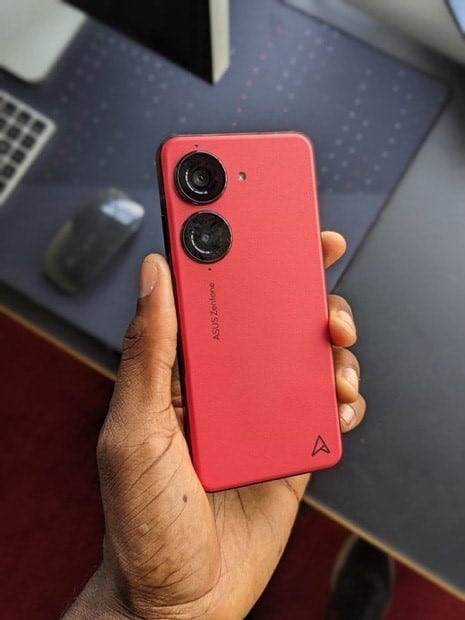
* 5.9-inch (2400 × 1080 pixels) Full HD+ AMOLED HDR 10+ 20:9 aspect ratio display with 144Hz refresh rate, up to 1100 nits peak brightness, 151.9% sRGB, 112% DCI-P3 color gamut, Delta E<1, HDR10+, Corning Gorilla Glass Victus protection
* Up to 3.2GHz Octa Core Snapdragon 8 Gen 2 4nm Mobile Platform with Adreno 740 GPU
* 8GB LPDDR5X RAM with 128GB / 256GB UFS 4.0 storage, 16GB LPDDR5X RAM with 512GB UFS 4.0 storage
* Android 13 with ASUS ZenUI
* Dual SIM (nano + nano)
* 50MP camera with Sony IMX766 sensor, f/1.9 aperture, six-axis gimbal stabilization 2.0, 2×2 OCL PDAF, 13MP 120° ultra-wide camera, Dual PDAF, 8K 24fps video recording
* 32MP front camera with RGBW technology
* 3.5mm audio jack, Qualcomm Aqstic WCD9380, Stereo speakers, Dirac Virtuo for Headphone Spatial Sound, Two microphones with OZO Audio Noise Reduction Technology
* Water and dust resistant (IP68)
* Side-mounted fingerprint scanner
* Dimensions: 146.5×68.1 ×9.4mm; Weight: 172g
* 5G SA/NSA, Dual 4G VoLTE, Wi-Fi 802.11be 7, Bluetooth 5.3,GNSS support GPS (L1/L5), Glonass (L1), Galileo (E1/E5a), BeiDou(B1/B2a), QZSS (L1/L5) and NavIC(L5), USB Type-C, NFC
* 4300mAh (typical) with 30W fast charging, 15W wireless charging
ASUS Zenfone 10: New flagship starts with supreme performance and Pixel 5 sizing for €799
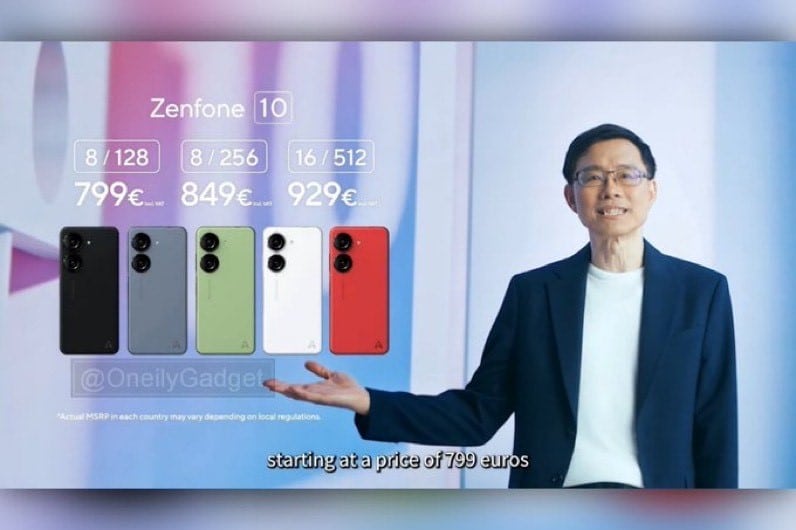
ASUS has introduced the Zenfone 10, a colourful smartphone that builds on the template of the Zenfone 9. Equipped with a Snapdragon 8 Gen 2 SoC, LPDDR5X RAM, UFS 4.0 flash storage and a 4,300 mAh battery, the Zenfone 10 is the most powerful compact smartphone around.
ASUS has now launched the Zenfone 10, which appears to address the shortcomings of its predecessor. As expected, the Zenfone 10 features the Snapdragon 8 Gen 2 SoC within a chassis barely bigger than the Pixel 5 (146.5 x 68.1 x 9.4 mm).

ASUS complements the SoC with LPDDR5X RAM and UFS 4.0 flash storage, matching most recent flagship smartphones. Memory configurations will vary between markets, but the Zenfone 10 will be available with up to 16 GB of RAM and 512 GB of storage.
Additionally, ASUS offers a 5.9-inch AMOLED display that outputs at 1080p, 144 Hz, 1,100 nits and is protected by Corning Gorilla Glass Victus. Please note that 144 Hz mode can only be enabled in Game Genie while playing mobile games.
In other words, Android 13 and third-party apps will not run at this refresh rate. ASUS continues to include a multi-functional fingerprint scanner too, now called ZenTouch 2.0.
ASUS ZENFONE 10 KEY SPECIFICATIONS
Key Specs
| RAM | 8 GB |
| Processor | Qualcomm Snapdragon 8 Gen 2 |
| Rear Camera | 50 MP + 50 MP + 12 MP |
| Front Camera | 32 MP |
| Battery | 5000 mAh |
| Display | 6.3 inches (16 cm) |
General
| Launch Date | May 11, 2023 (Unofficial) |
| Operating System | Android v13 |
Performance
| Chipset | Qualcomm Snapdragon 8 Gen 2 |
| CPU | Octa core (3.2 GHz, Single core, Cortex X3 + 2.8 GHz, Quad core, Cortex A715 + 2 GHz, Tri core, Cortex A510) |
| Architecture | 64 bit |
| Fabrication | 4 nm |
| Graphics | Adreno 740 |
| RAM | 8 GB |
Display
| Display Type | AMOLED |
| Screen Size | 6.3 inches (16 cm) |
| Resolution | 1080 x 2400 pixels |
| Pixel Density | 418 ppi |
| Screen Protection | Corning Gorilla Glass v5 |
| Bezel-less display | Yes |
| Touch Screen | Yes, Capacitive Touchscreen, Multi-touch |
| Refresh Rate | 120 Hz |
Design
| Waterproof | Yes, Water resistant, IP68 |
| Ruggedness | Dust proof |
Camera
| MAIN CAMERA | ||
| Camera Setup | Triple | |
| Resolution | 50 MP, Primary Camera 50 MP, Ultra-Wide Angle Camera 12 MP |
|
| Autofocus | Yes | |
| OIS | Yes | |
| Flash | Yes, LED Flash | |
| Image Resolution | 8150 x 6150 Pixels | |
| Settings | Exposure compensation, ISO control | |
| Shooting Modes | Continuous Shooting High Dynamic Range mode (HDR) |
|
| Camera Features | Digital Zoom Auto Flash Face detection Touch to focus |
|
| FRONT CAMERA | ||
| Camera Setup | Single | |
| Resolution | 32 MP, Primary Camera | |
| Video Recording | 1920×1080 @ 30 fps | |
Battery
| Capacity | 5000 mAh |
| Type | Li-Polymer |
| Removable | No |
| Quick Charging | Yes, Fast, 67W |
| USB Type-C | Yes |
Storage
| Internal Memory | 128 GB |
| Expandable Memory | No |
Network & Connectivity
| SIM Slot(s) | Dual SIM, GSM+GSM |
| SIM Size | SIM1: Nano, SIM2: Nano |
| Network Support | 5G Not Supported in India, 4G Supported in India, 3G, 2G |
| VoLTE | Yes |
| SIM 1 |
4G Bands:
TD-LTE 2300(band 40)
FD-LTE 1800(band 3) 3G Bands:
UMTS 1900 / 2100 / 850 / 900 MHz
2G Bands:
GSM 1800 / 1900 / 850 / 900 MHz
GPRS:
Available
EDGE:
Available
|
| SIM 2 |
4G Bands:
TD-LTE 2300(band 40)
FD-LTE 1800(band 3) 3G Bands:
UMTS 1900 / 2100 / 850 / 900 MHz
2G Bands:
GSM 1800 / 1900 / 850 / 900 MHz
GPRS:
Available
EDGE:
Available
|
| Wi-Fi | Yes, Wi-Fi 4 (802.11 b/g/n) |
| Wi-Fi Features | Mobile Hotspot |
| Bluetooth | Yes, v5.2 |
| GPS | Yes with A-GPS, Glonass |
| NFC | Yes |
| USB Connectivity | Mass storage device, USB charging |
Multimedia
| Loudspeaker | Yes |
| Audio Jack | USB Type-C |
Sensors
| Fingerprint Sensor | Yes |
| Fingerprint Sensor Position | On-screen |
| Fingerprint Sensor Type | Optical |
| Other Sensors | Light sensor, Proximity sensor, Accelerometer |
Faqs
1) What is difference between Zenfone 10 vs Galaxy S23 in a nutshell?
Ans) 5.9-inch display on the Zenfone 10 vs 6.1 on the Galaxy S23
The Zenfone 10 is narrower, but the Galaxy S23 is thinner and shorter
Telephoto camera on the Galaxy S23
The Zenfone 10 has a larger battery and faster charging (4,300 vs 3,900 mAh, 30W vs 25W)
3.5mm headphone jack on the Zenfone 10
144Hz “gaming” mode on the Zenfone 10 (no LTPO, though)
2) What Is Design and Display Quality of Asus Zenfone 10 & Galaxy S23?
Ans) There’s a conceptual difference in design between the Zenfone 10 and the Galaxy S23. The former tries to break out of the traditional glass sandwich with a very interesting back (which feels rubbery and papery), while the latter goes for that thin slice of glass-metal-glass.
Beauty is in the eye of the beholder, but for most people, the Galaxy S23 could subjectively be the prettier and more stylish device. That being said, the Zenfone 10 offers something unique in this glass and metal jungle the modern smartphone space is in at the moment, so it’s down to personal preference.
What could be said objectively is that the back of the Zenfone 10 scratches more easily, while the back of the Galaxy S23 is prone to shattering and is a fingerprint magnet. You make your own choice here, but the Zenfone 10 could be used without a case, and that’s certainly a pro in our book.
In terms of weight and size, the Zenfone 10 and the Galaxy S23 are much closer than one might imagine. Both phones weigh around 170 grams, and their dimensions are quite similar as well, with differences of about one or two millimeters. The Galaxy S23 is shorter, slimmer, but wider, while the Zenfone 10 is narrower, a tad taller, and also thicker.
Even though the Zenfone 10’s screen is made by Samsung and calibrated by Pixelworks, there are some clear differences with the Galaxy S23 here. Samsung’s flagship offers a tad more screen estate at 6.1 inches, the display is LTPO, which means it can go between 48 and 120 Hz; and its peak brightness is also better at 1,750 nits.
The Zenfone 10, on the other hand, comes with a 5.9-inch panel that has an advertised peak brightness of 1,100 nits and can only switch between fixed display refresh rates, namely 60, 90, and 120 Hz. In gaming scenarios, the Zenfone 10 can overdrive to 144 Hz, though, which is a helpful feature if you’re into mobile gaming.
Biometrics deserve some words here, for sure, as this is another conceptual difference between the Galaxy S23 and the Zenfone 10. The Galaxy uses an under-display fingerprint scanner, while the Zenfone 10 relies on a capacitive side-mounted one. It’s another case of personal preference, but in our experience, the Zenfone performs faster and is more accurate when it comes to unlocking the device with your finger.
3) How is Performance and Software of Asus Zenfone 10 & Galaxy S23?
Ans) In terms of hardware, both the Zenfone 10 and the Galaxy S23 share very similar silicon, namely the Snapdragon 8 Gen 2 chipset. Both phones start at 8GB/128GB memory configurations, but the Zenfone 10 can be purchased with up to 16GB of RAM and 512GB of storage. It costs more, but the option is there nonetheless. There’s no microSD card expansion slot on either of the two.
Synthetic benchmark scores are very close between these two, which is perfectly understandable, and in real life scenarios, you won’t be able to notice any lag, stutter, or drop in performance on either device.
Both the Galaxy S23 and the Zenfone 10 come with Android 13 onboard, and they will soon get the upcoming big Android 14 upgrade. The Zenfone coats Google’s mobile OS with the velvety hands of the ZenUI, a very subtle and pretty helpful overlay, while the Galaxy relies on the OneUI interface, a more customized and generally different experience.
The Zenfone 10 allows you to choose from the ZenUI experience or stock Android, while the Galaxy S23 kinda forces the OneUI on you, so that’s a point for Asus. On the other hand, if you’re coming from Samsung’s ecosystem, this one might be a pro in your book.
One big advantage for camp Samsung here is the software support situation. The Korean company has committed to four years of major Android updates, while the Zenfone 10 will only receive two new Android versions.
4) How is Camera of Asus Zenfone 10 & Galaxy S23?
Ans) Here lies one of the biggest differences between these two phones and probably a deciding factor for many users. The Galaxy S23 comes with a dedicated telephoto camera, while the Zenfone 10 relies on digital zoom.
The main and ultrawide cameras on both phones are very similar, at least on paper, both use 50 MP sensors with similar apertures and sensor sizes. We’re in the age of computational photography, though, so it’s time to see how these two perform in real life conditions.
5) What is Asus Zenfone 10 review?
Ans) Pros
Compact size
Top performance
Great battery life
Very customisable software
Headphone jack
Cons
Camera is not top tier
Only two years of Android updates
Hard to type on small screen
30W charging is slow
Our Verdict
The Asus Zenfone 10 is a decent phone with a small screen, top-end specs, and all the hardware and software features you could ask for, but the camera and software support aren’t good enough.
Asus is best known for its laptops and gaming gear, but each year it also releases a premium-spec smartphone under the Zenfone name.
The Zenfone 10 is the latest iteration, and it’s much like 2022’s Zenfone 9: an Android phone marketed as a small, compact device with an eye catching design, top-end specs, and thoughtful software.
For the most part, the Zenfone 10 is all those things, though it’s not the smallest phone around. It’s taller than the iPhone 13 mini and iPhone SE and is roughly the same dimensions as an iPhone 14 but with a smaller screen.
Don’t get me wrong, Asus has a good phone on its hands here – it ticks practically every possible box on the spec sheet. In doing so the Zenfone 10 ends up doing everything pretty well, but its display and camera aren’t top drawer.
0 seconds of 10 minutes, 6 seconds
6) How is the Design & build of Asus Zenfone 10?
Ans) Narrow design
Paper-feel back
Headphone jack
Asus has not changed much of the look of the Zenfone 10 from the Zenfone 9. In fact, it’s exactly the same dimensions at 146.5 x 68.1 x 9.4mm. That’s smaller than many of the biggest phones out there, but it’s not the smallest.
The iPhone 13 mini is 131.5 x 64.2 x 7.7mm and the Samsung Galaxy S23 is 146.3 x 70.9 x 7.6mm – both are thinner and shorter than the Zenfone. Heck, even the regular iPhone 14 is 146.7 x 71.5 x 7.8mm, only 0.2mm taller and 0.1mm thicker than the Zenfone 9.
I only labour this point because Asus markets the Zenfone 10 as some one-handed mini phone miracle, but it’s very similarly sized to other globally available high-end handsets.
7) How are the Screen & speakers of Asus Zenfone 10?
Ans) ”Small’ 5.9in screen
Up to 144Hz for gaming
Dual stereo speakers
The Zenfone 10 has a 5.92in OLED 2400x1080p display. It’s quite skinny with a 20.4:9 aspect ratio, which makes it easier to hold in one hand and doomscroll.
It has a maximum refresh rate of 144Hz. This is higher than the 120Hz seen on most high-end phones such as the Samsung Galaxy S23 Ultra and is a spec usually found on gaming phones, which makes sense as the Zenfone can only hit 144Hz in supported games.
Otherwise, you can select 60-, 90-, or 120Hz, or ‘auto’ that switches between these three to save battery depending on what you’re doing.
It’s a good display, and noticeably pokier than, say, an iPhone 14, as it’s narrower than that and many other compact rivals.
I didn’t miss having a higher resolution given it’s quite a small screen by modern standards. I wish it went a little brighter though – it’s capable of 1,100 nits at peak brightness but Asus says it only has 800 nits of outdoor readable brightness. The screen is hard to read in daylight.
The dual stereo speakers are nothing to write home about. They can get loud enough for podcasts, but given the smallness of the phone they aren’t very full, and it can get quite tinny at loud volumes.
8) How is the Battery & charging of Asus Zenfone 10?
Ans) Excellent longevity
Slow 30W wired charging
Excellent software charging options
From slight disappointment with the camera to being bowled over with battery life. I don’t know what wizardry Asus is doing here, but the Zenfone 10 has no right lasting this long considering it’s running the Snapdragon 8 Gen 2 and only has a 4300mAh battery.
Other premium phones like the Galaxy S23 Ultra have the same chip but barely eke out a day’s power on 5000mAh batteries.
9) What is the Price & availability of Asus Zenfone 10 ?
Ans) The Asus Zenfone 10 costs from £749.99/€799. It’s available to pre-order now in the UK direct from Asus until 31 July.
The phone is coming to the US with a Q3 release planned. There’s no confirmed price or exact release date yet, though.
European pricing pitches the phone as a premium device close that undercuts the $799/£849/€799 Samsung Galaxy S23 and the $799/£849/€1,019 iPhone 14. It’s around the same price as the $699/£729/€849 OnePlus 11, but I think the OnePlus is a better buy for its superlative cameras, software support, and charging speeds unless you really want the compact form factor.


